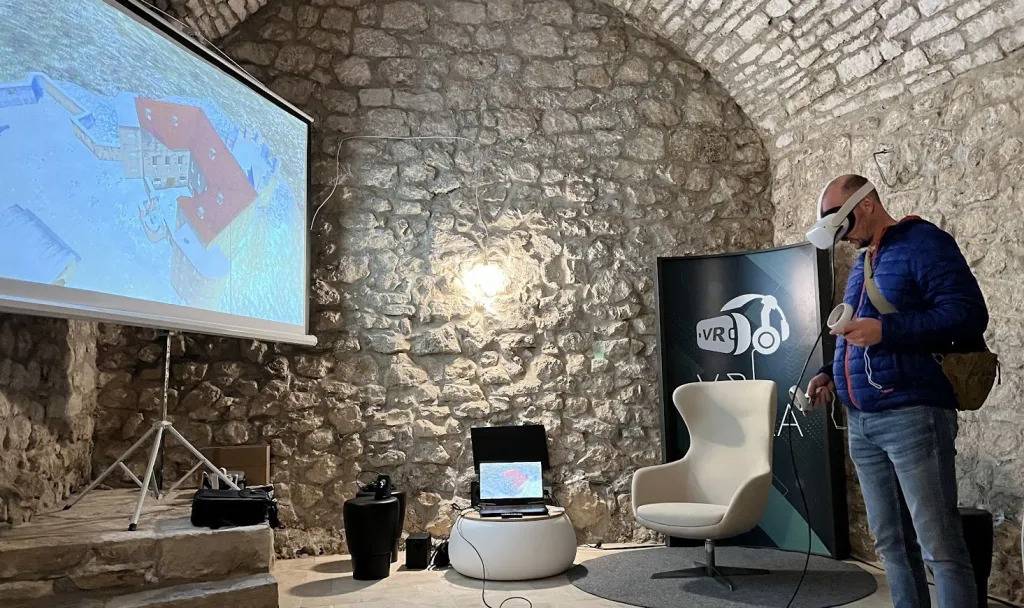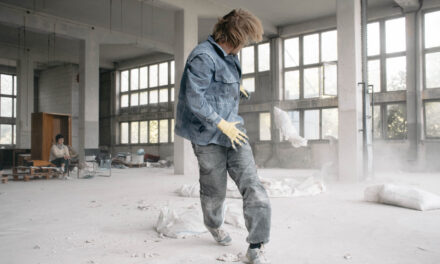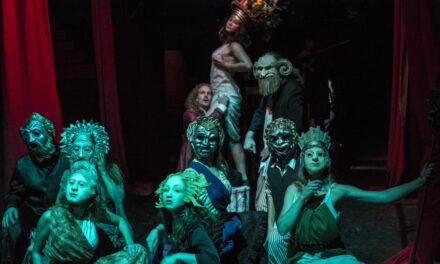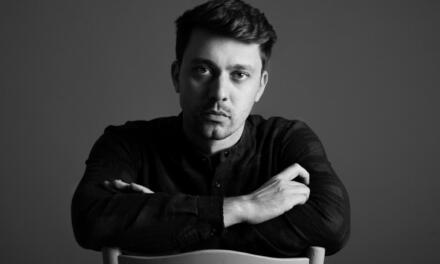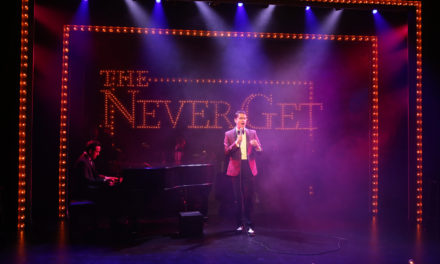Interview with Selma Rizvic, the founder of the Sarajevo Group Laboratory and the digital cultural heritage related organization DIGI.BA. Their work is recognized in the whole region of Western Balkans and Europe, as they collaborated in many European Collaborations. In the frame of these a pipeline was developed that serves now to work
Tell us about your background and career path.
I graduated Computer Science at the Faculty of Electrical Engineering, University of Sarajevo and have a PhD in computer graphics. My first work experience was research assistant position at the Faculty of Electrical Engineering, but then the aggression on my country started and we were expelled from our building that remained in the part under Serb occupation. I was in Sarajevo all along the siege from 1992-1996. By chance in 1993 I met a technical director of Bosnian Radio-Television and he offered me a job as graphics designer. That was the moment when I discovered computer graphics. I spent 26 years working as broadcast designer and head of Broadcast Design Department at BHRT. In 1996 I was offered a part time lecturer position at the University of Sarajevo where I became Assistant Professor in 2008, Associate Professor in 2013 and Full Professor in 2018. In 2019 I quit the television and transferred full time to the University. In 2004 I founded the Sarajevo Graphics Group Laboratory and in 2010 Association for Cultural Heritage digitization DIGI.BA.
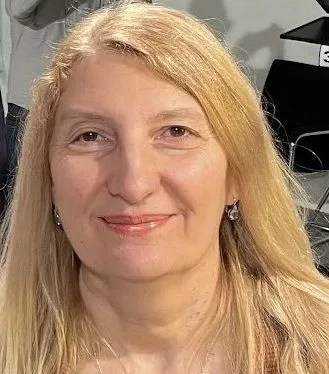
Selma Rizvic
What was your first encounter with VR?
I don’t remember, probably at some computer science conference or exhibition.
How was for you to work on your first VR production?
Our first VR project, though, was H2020 iMARECULTURE, where we presented underwater cultural heritage through Virtual Reality. The project was dedicated to “unsinking” selected underwater heritage sites through VR, AR and digital storytelling. We recreated the ancient city of Baiae in Italy and two shipwreck sites, Mazotos in Cyprus and Xlendi in Malta. Our group developed a new stoytelling methodology called “hyper-storytelling,” where the historical information is presented through a hierarchical structure of short stories.
You are teaching in the field of interactive digital storytelling in relation to cultural heritage. How do you approach the design of such a curriculum? How do you prepare for it?
When I started teaching Computer Graphics in 1996, I decided to make it more about applications, rather than algorithms and programming. With students we approached museums and started digitizing their exhibitions adding storytelling about exhibition topics. We also started virtually recreating cultural monuments that do not exist anymore or are damaged or neglected. All these projects are intertwined with curriculums of two courses I teach, where students learn techniques and skills needed for digital cultural heritage. One of those techniques is interactive digital storytelling.
How do you approach a cultural heritage artefact when you start to embed it or build around it an interactive digital storytelling?
We are either invited by a museum or cultural heritage site to create the digital content, or we approach the institution in charge of an object/site that have interesting stories. If we are working on a cultural monument, we usually create a 3D model of its original appearance and combine it with storytelling. If a museum exhibit is our topic, we digitize it using photogrammetry and embed it into the VR/AR application where the users can see it and explore it in a way impossible to do in the museum, where the exhibits cannot be touched.
How do you frame it, why it is important to “preserve” cultural heritage with interactive digital storytelling?
Many cultural monuments and sites are missing a story. If one visits the classical museum exhibition, it is very difficult to understand the context of exhibits from small labels aside them. Archeological site for a non-expert visitors looks like a bunch of stones. Interactive digital storytelling can connect the physical exhibit, its digital replica and the historical period it originates from. It can take the visitor to time travel into the past and enable him/her to experience cultural heritage. This allows the real preservation in collective memory of people.
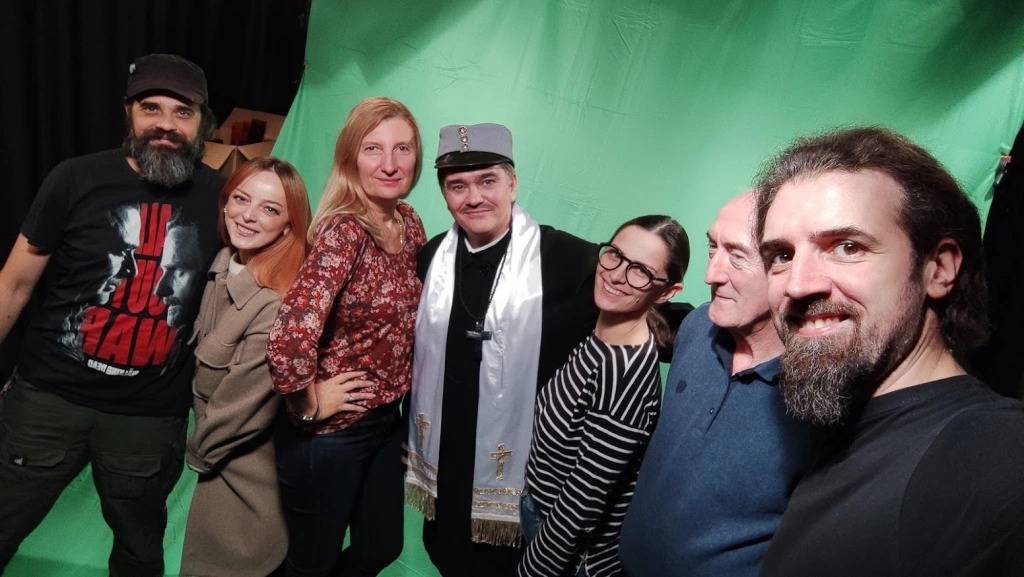
Filming the actor on green screen. Photo by Bojan Mijatovic.
How do you deal with historical facts? Do you also use fictionalization in your work?
We aim to follow the historical facts, therefore we always consult historians and archaeologists. In agreement with them we sometimes recreate objects according to their assumptions, but we always annotate the uncertainty in presented appearance. Also, in agreement with museums, we tailor the storytelling scenarios adding fictional characters in order to enable the users to experience the life in the past.
Working on interdisciplinary projects such as these that combine storytelling, cultural heritage, IT-technology and animation needs a particular attention to details and a concise brief that helps the team to stay focused on the subject. It also requires a careful communication style from all the group members. How do you work with such widely interdisciplinary teams?
The only way to create a good quality digital heritage application is to engage best professionals from all fields, such as archaeologists, museum professionals, screenplay writers, 3D artists, actors, visual artists, film and video professionals, music composers, sound designers, make-up artists, set and costume designers, and VR developers. Work with such teams is fantastic experience. We deeply respect each other and immensely enjoy the creative process, because it is a lot of fun!
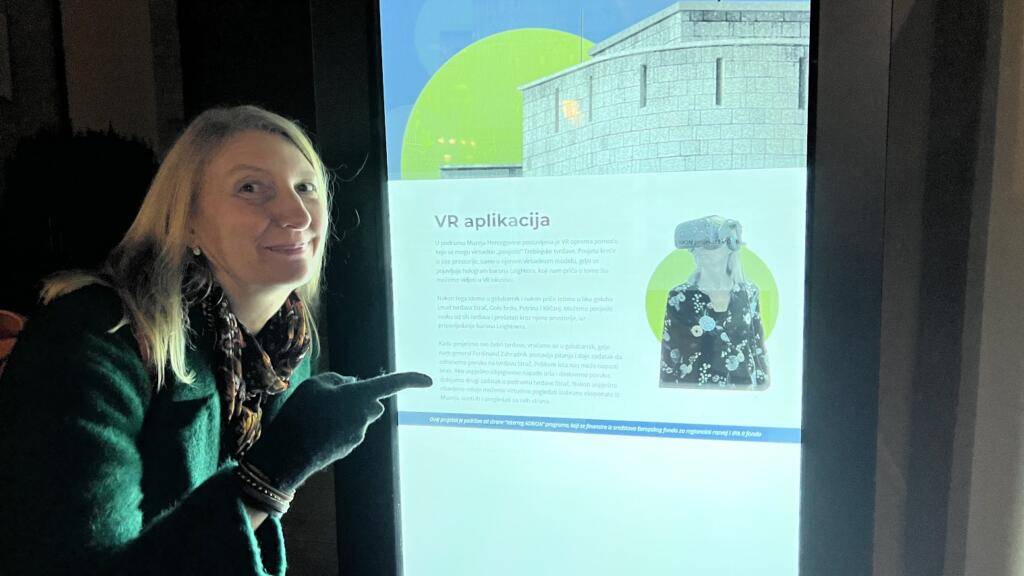
Totems as parts of digital content developed for Museum in Trebinje. Photo by Bojan Mijatovic.
How do you define: can VR add a plus for the storytelling aspect? If yes what is that “plus”?
Of course. VR transfers a person into different reality and enables it to truly experience the story. Even VR video where the viewer can only look around feels like a real visit to the place and time. Interaction adds a game like experience that provides learning and entertainment. The main challenge in interactive digital storytelling is overcoming so called narrative paradox – a conflict between linearity of the story and interactivity of the environment. We have been researching many different solutions for this problem.
You have worked on many projects in the above-mentioned fields? How do you see what would be a utopian future of cultural heritage representations in VR? What can we learn more from it?
Digital heritage offers many useful additions to cultural heritage presentation and preservation. Starting from digital archiving the cultural monuments and sites that can preserve them from decay and destruction, digital heritage applications introduce additional content to museum exhibitions and attract more people to museums. They offer learning through entertainment (so called edutainment) and spread historical information to all generations of visitors. Applications and exhibitions also live online and can be accessed from anywhere in the world. Augmented and Mixed Reality also revive the exteriors and enhance perception of cultural heritage sites. I believe that VR has to be combined with physical objects offering users to experience aspects of exhibitions that cannot be seen in reality. For example, the users become participants in historical events through VR and then see the remains of those locations in physical exhibitions. Only then they have full immersive heritage experience.
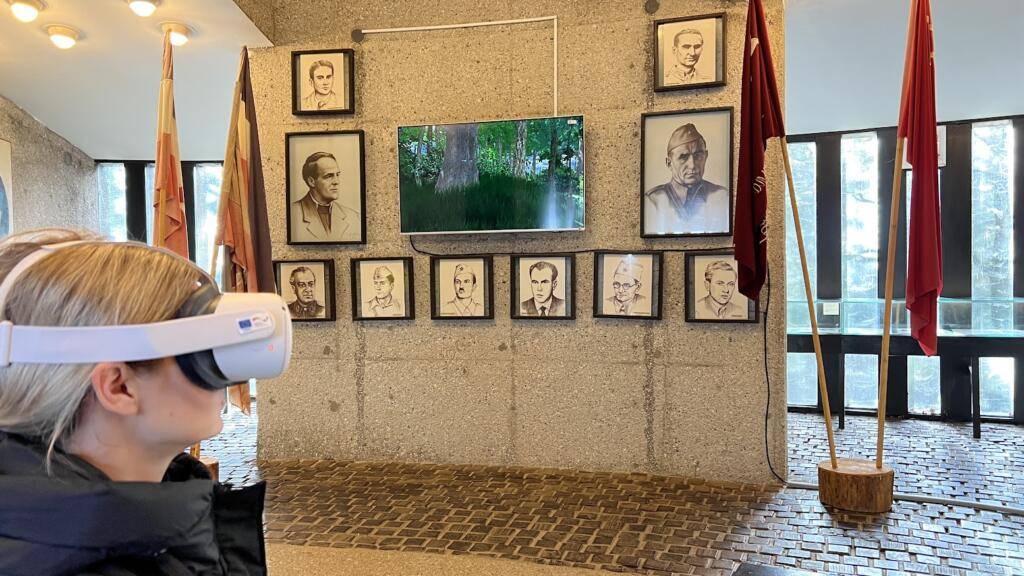
VR application about Kozara WWII battle installed in the Mrakovica Memorial Centre. Photo by Selma Rizvic.
What are your future projects? Or what would be you dream project?
At the moment we are working on a very interesting project about female rulers of Balkan countries in medieval period. The project is called SHELeadersVR and we plan to present queens from Bosnia and Herzegovina, Serbia, Montenegro, North Macedonia and Albania through VR and AR interactive digital storytelling. Five selected museums will host the VR application recreating these historical personalities, places where they lived and objects they were using. We believe that this digital content will motivate people to visit all five countries and museums.
Interview funded by International Visegrad Fund.
This article appeared in ZipScene Magazine on December 5, 2022, and has been reposted with permission. To read the original article, please click here.
This post was written by the author in their personal capacity.The opinions expressed in this article are the author’s own and do not reflect the view of The Theatre Times, their staff or collaborators.
This post was written by Zip Scene Magazine .
The views expressed here belong to the author and do not necessarily reflect our views and opinions.

